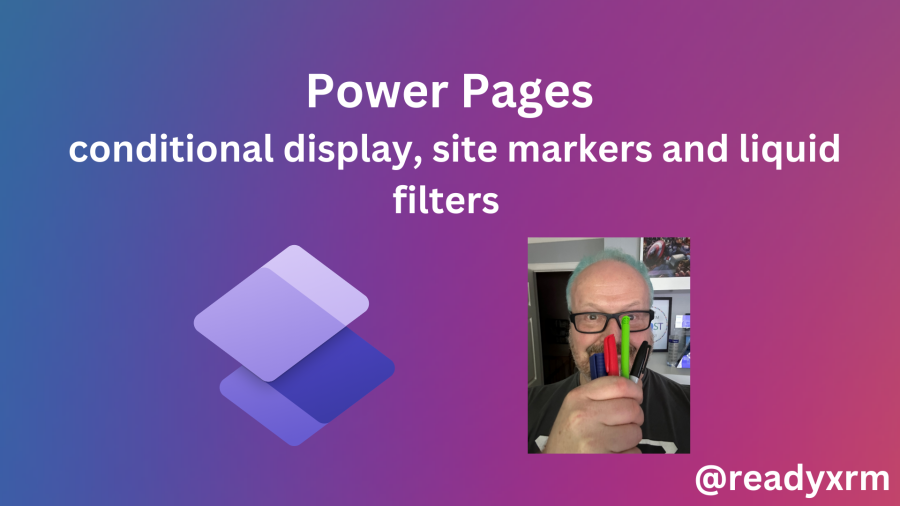Using Liquid in Power Pages allows you to create code to conditionally display both static and dynamic content based on certain conditions. A very simple example of this would be this piece of Liquid code that you can place in the source of a web page, web template, or a content snippet: The above code… Continue reading Power Pages: conditional display, site markers, and Liquid filters
Tag: html
Edit more in Power Pages using Visual Studio Code for the Web
While using Visual Studio Code (desktop) is a powerful way for pro-developers to extend Power Pages websites, sometimes you need to quickly go into a site and edit some code directly without having to launch Visual Studio Code for desktop, use the PAC CLI to download the latest code, make changes, and re-upload. There has… Continue reading Edit more in Power Pages using Visual Studio Code for the Web
Build custom HTML forms in Power Pages: Part 2
Last time I showed an example of creating a custom HTML form with the Power Pages WebAPI to create new records in Microsoft Dataverse. This demonstrated a different method of using a fully-customizable HTML form rather than a form component based on a form form a model-driven app. See Build custom HTML forms in Power Pages:… Continue reading Build custom HTML forms in Power Pages: Part 2
Build custom HTML forms in Power Pages: Part 1
One of the features of Power Pages is the ability to use a model-driven app Dataverse form as a foundation to build create, edit, and read-only forms on Power Pages websites. This feature goes back to the Adxstudio days where the Adxstudio portal product allowed you to use a Dynamics CRM form and surface it… Continue reading Build custom HTML forms in Power Pages: Part 1
Inject content into Power Apps portals form components
Sometimes even the most simple requests can balloon in extra configuration to meet the client’s vision. One of the most common uses of a Power Apps portal is to collect some information using a form. Adding a form component to a portal page is a very simple exercise. You create the model-driven form in the… Continue reading Inject content into Power Apps portals form components
Low-code method to surface data from the Common Data Service (Dynamics 365) on a public webpage. NOT using a Portal.
In order to be successful with a career in technology, you must constantly be learning. This may involve reading, taking classes or watching videos. Not only about the Power Platform or Dynamics 365 but learning about other technology stacks and methods, and thinking about how to apply them to your projects. One week ago I… Continue reading Low-code method to surface data from the Common Data Service (Dynamics 365) on a public webpage. NOT using a Portal.
Dynamics 365 Portals – Overcoming Entity List Roadblocks with HTML and Liquid
Summary Entity Lists are an easily configurable way to show list data on a Dynamics 365 Portal, but lack a couple of key features; Entity Lists do not have the ability to drill down to different records from the view. Cannot dynamically show/hide columns or highlight fields. Sorting requires fields to be displayed on Entity… Continue reading Dynamics 365 Portals – Overcoming Entity List Roadblocks with HTML and Liquid







